Fix: On Screen or Touch Keyboard Changed from Black to White
Your virtual keyboard (On-Screen or Touch keyboard) may have changed its color from black to white as a result of a change of the apps’ color mode. Moreover, conflicting keyboard applications (for example, Touch keyboard hindering the operation of On-Screen Keyboard) may also cause the issue at hand.
The issue, usually after a Windows update, arises when the virtual keyboard (On-Screen Keyboard or Touch) has changed the color from black to white (or transparent) which makes the keyboard very difficult to use whenever there are applications in the background (or due to the same background color). Some users reported the issue in the tablet mode of Windows 10.

Before moving on to change the color of your keyboard on the screen, check if restarting the PC resolves the issue. Moreover, make sure the Windows of your system is updated to the latest build. Also, check if trying another keyboard (e.g., if you are encountering the issue with a touch keyboard, then launching the On-Screen keyboard may resolve the issue and vice versa) from the following locations (you may copy-paste it in the address bar):
On-Screen Keyboard:
\windows\system32\OSK.exe
Touch Keyboard:
\Program Files\Common Files\microsoft shared\ink\TabTip.exe
Solution 1: Change the Colors Mode of the Apps to Dark
In the latest updates of Windows, Microsoft has included the ability for the user to switch between the light and dark modes for the apps and the Windows. You may see the white background for the On-Screen Keyboard if you have set apps colors (yes, On-Screen Keyboard inherits the colors scheme of the apps’ colors, not Windows) in the Windows Settings to the light mode. In this case, setting the apps’ mode to the dark may solve the problem.
- Click the Windows key and select Settings.
- Now open Personalization and then steer to the Colors tab (in the left pane).
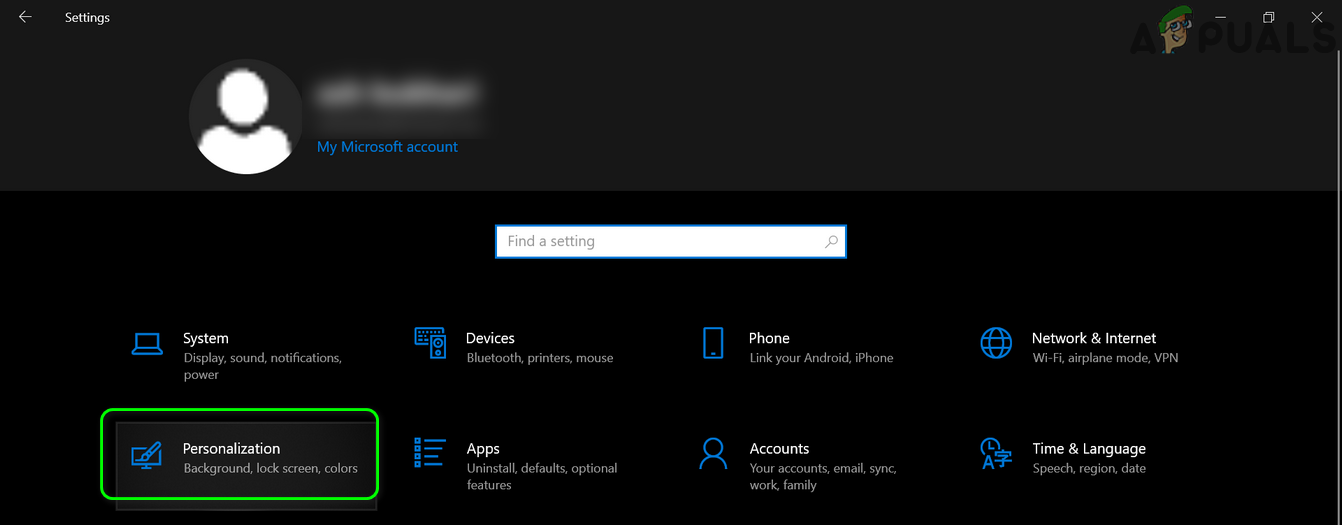
Open Personalization in the Windows Settings - Then expand the drop-down of Choose Your Color and select Custom (you may choose Dark if you want the Apps and Windows to be in the dark mode).
- Now, under Choose Your Default App Mode, select Dark and then check if the keyboard issue is resolved.
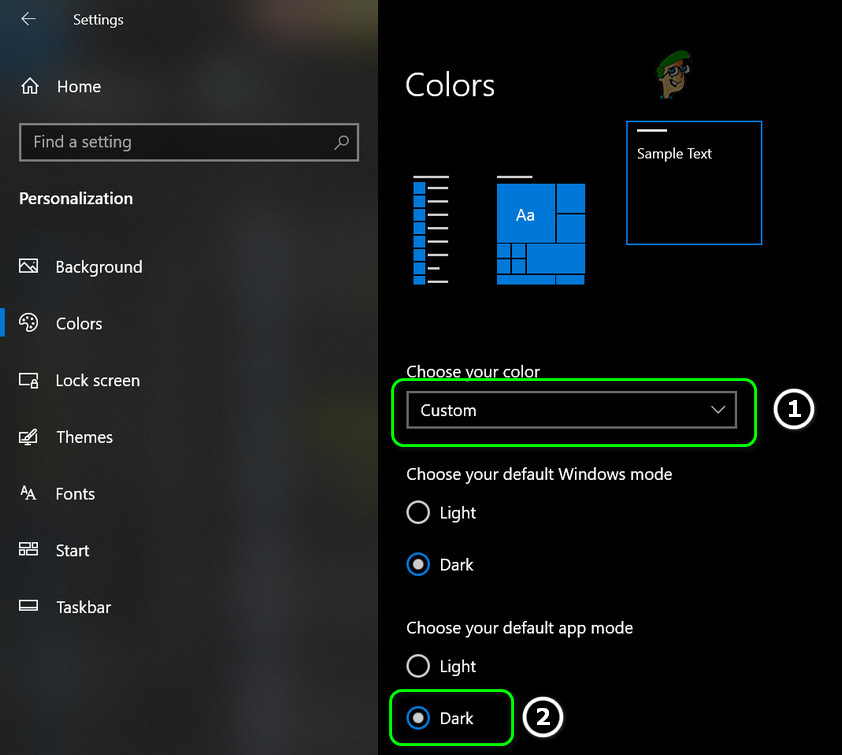
Set Your Default App Mode to Dark
Solution 2: Disable On-Screen Keyboard
You may encounter the issue at hand if the On-Screen keyboard is hindering the operation of the touch keyboard. In this case, disabling the On-Screen Keyboard may solve the problem.
- Click the Windows key and open Settings.
- Now select Ease of Access and then, in the left pane (you may have to scroll a bit), select Keyboard (under Interaction).
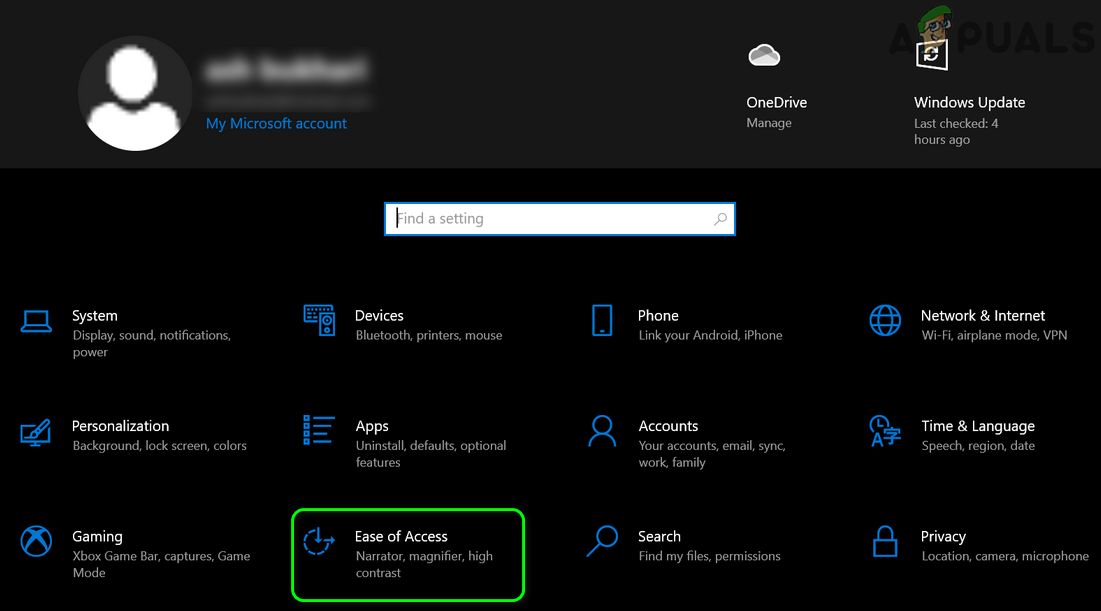
Open Ease of Access in Settings - Then, in the right pane, disable the option of Use the On-Screen Keyboard by toggling its switch to the off position.
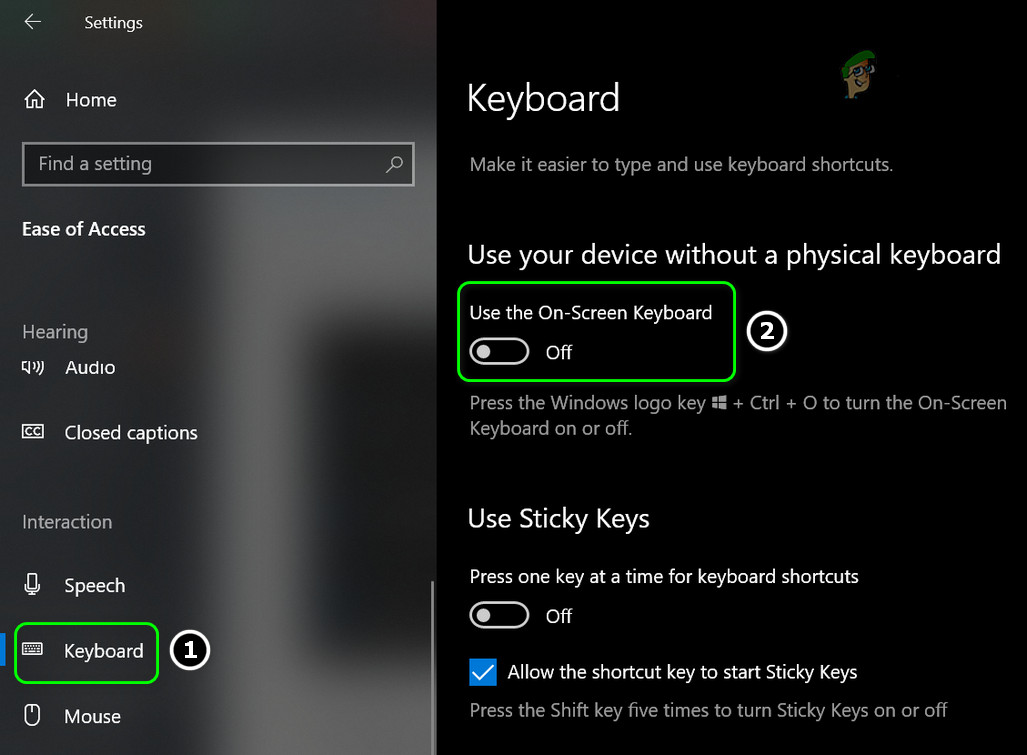
Disable the On-Screen Keyboard - Now check if the keyboard issue is resolved.
Solution 3: End the Task of the Touch Keyboard
The issue at hand could be a result of a temporary glitch of the OS input modules and may get cleared by ending the task of the Touch keyboard in the Task Manager.
- Right-click on the Windows button (to launch the Power User menu) and open Task Manager.
- Now right-click on the process of Touch Keyboard and Handwriting Panel.
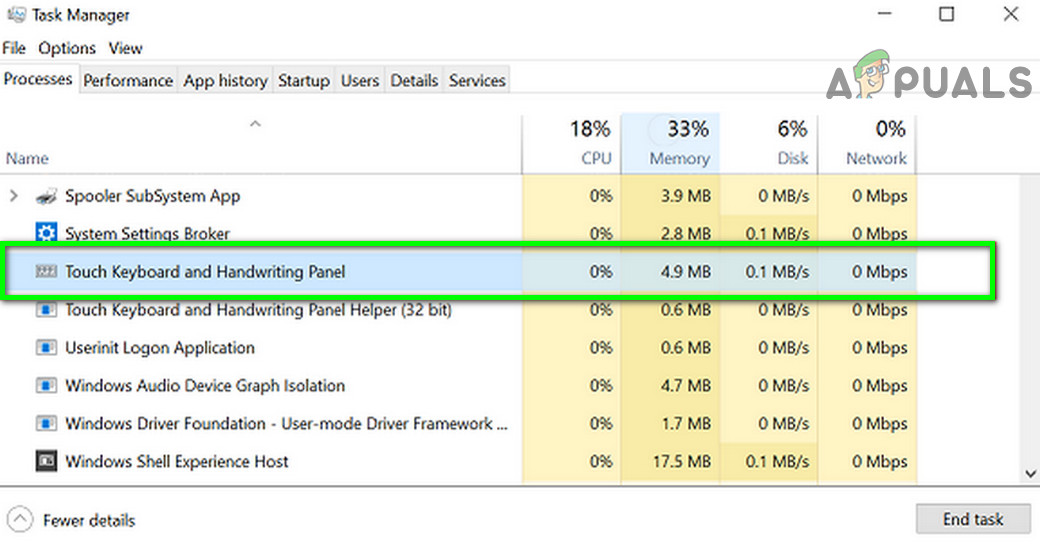
End Task of Touch Keyboard and Handwriting Panel - Then select End Task and check if the keyboard is working fine.
- If not, then click on the Windows button and scroll the Start menu till you find the Windows System.
- Now expand Windows System and right-click on the Command Prompt.
- Then hover your mouse over More and then select Run as Administrator.
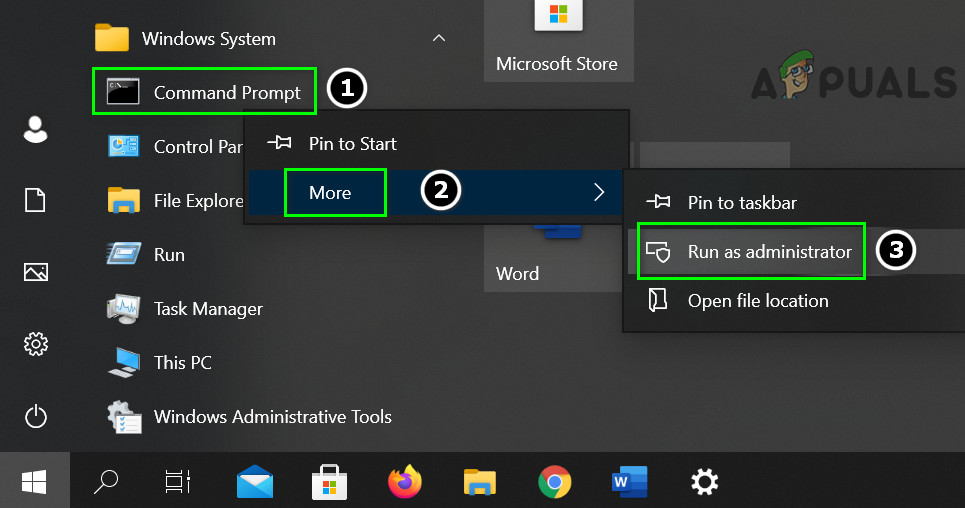
Run Command Prompt from Windows System as Administrator - Now execute the following (you may copy-paste the command in the command prompt or use an external keyboard to issue the command):
net stop TabletInputService
- If the issue persists, then execute the following in an elevated Command Prompt (steps 4 to 6) to restart the keyboard software:
taskkill.exe /F /IM WindowsInternal.ComposableShell.Experiences.TextInput.InputApp.exe
- If so, then you may create a batch file of this command and place it on the desktop and launch it whenever you encounter the issue.
Solution 4: Disable Touch Keyboard
You may encounter the issue at hand if the touch keyboard of your system is hindering the operation of the On-Screen keyboard. In this context, disabling the touch keyboard may solve the problem.
- Click the Windows key and open Settings.
- Now select Devices and then, in the left pane, steer to the Typing tab.
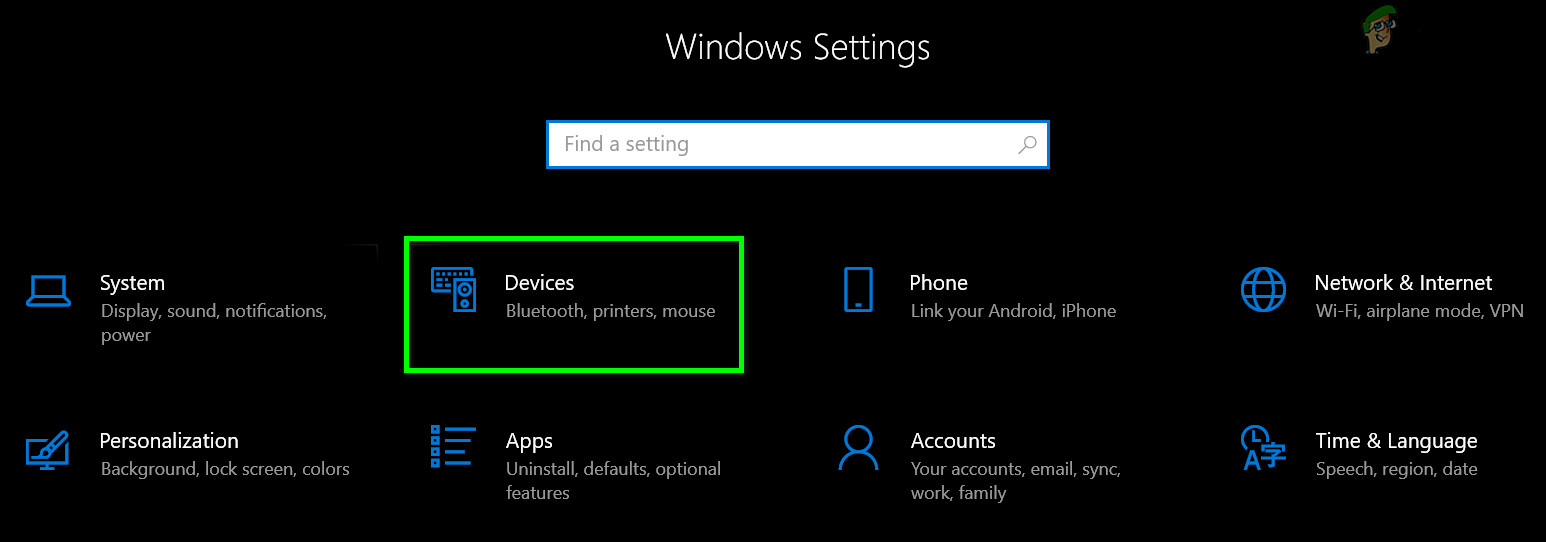
Open Devices in Windows Settings - Then, in the right pane, disable the option of Show the Touch Keyboard When not in Tablet Mode (in the Touch Keyboard section) and reboot your PC.
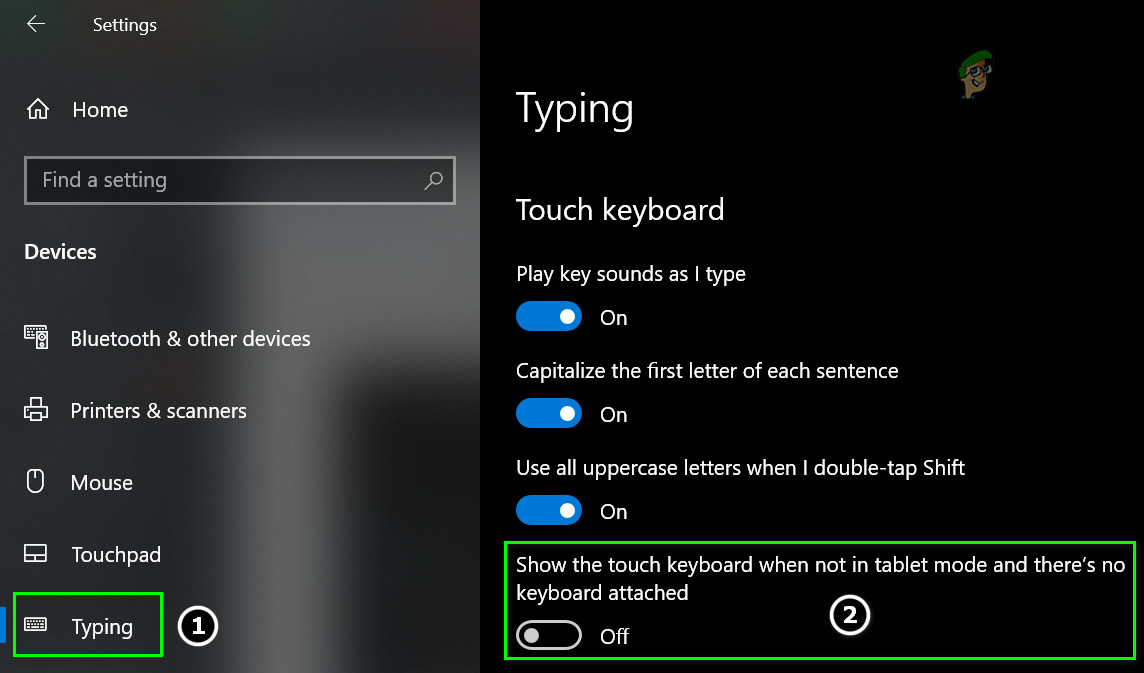
Disable the option of Show the Touch Keyboard When not in Tablet Mode - Upon reboot, check if the keyboard issue is resolved.
Solution 5: Restart the Touch Keyboard Service
The issue may arise if the Touch Keyboard service (which is essential for the Touch Keyboard) is in an error state. In this context, restarting the Touch Keyboard service may solve the problem.
- Click on the Windows button and scroll down till you find the Windows Administrative Tools.
- Now expand Windows Administrative Tools and then right-click on Services.
- Then hover your mouse over More and choose Run as Administrator.
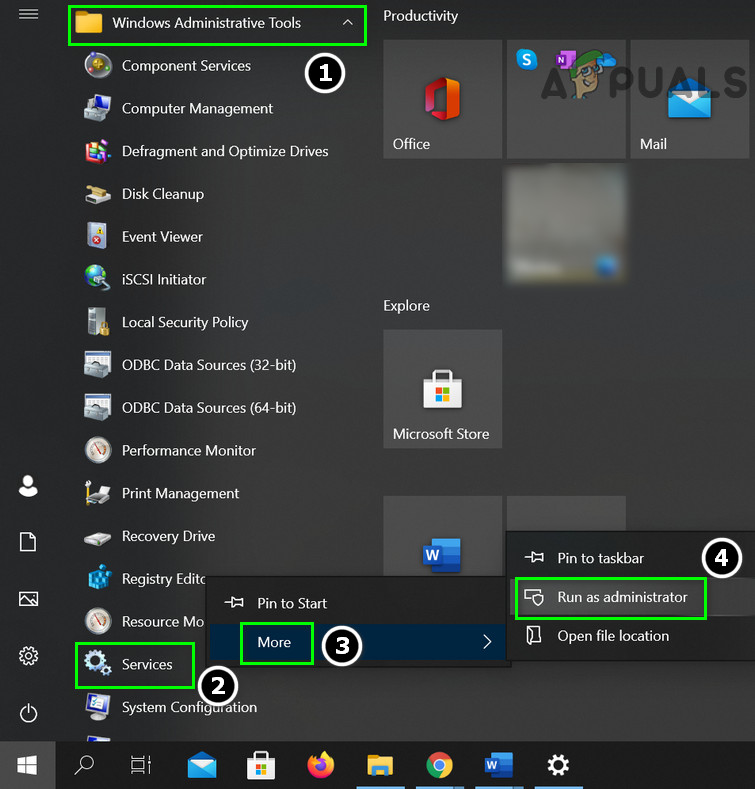
Run Services as Administrator from the Windows Administrator Tools - Now right-click on Touch Keyboard and Handwriting Panel Service.
- Then select Restart and check if the keyboard problem is solved.
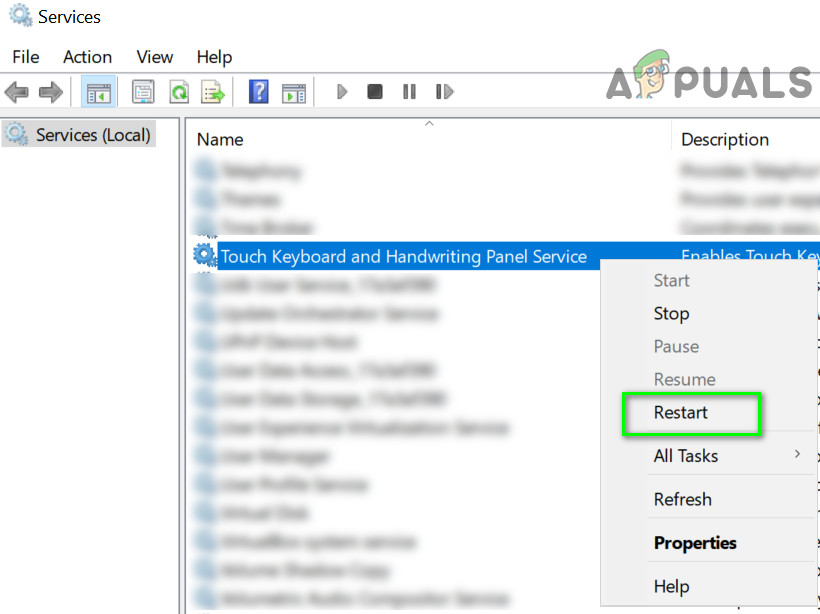
Restart Touch Keyboard and Handwriting Panel Service - If the restart option is greyed out, then check if disabling/enabling the Touch Keyboard service solves the problem.
If the issue persists, then check if updating or reinstalling the graphics driver solves the keyboard problem. If that did not do the trick, then check if reverting to an older version of Windows 10 resolves the problem.




